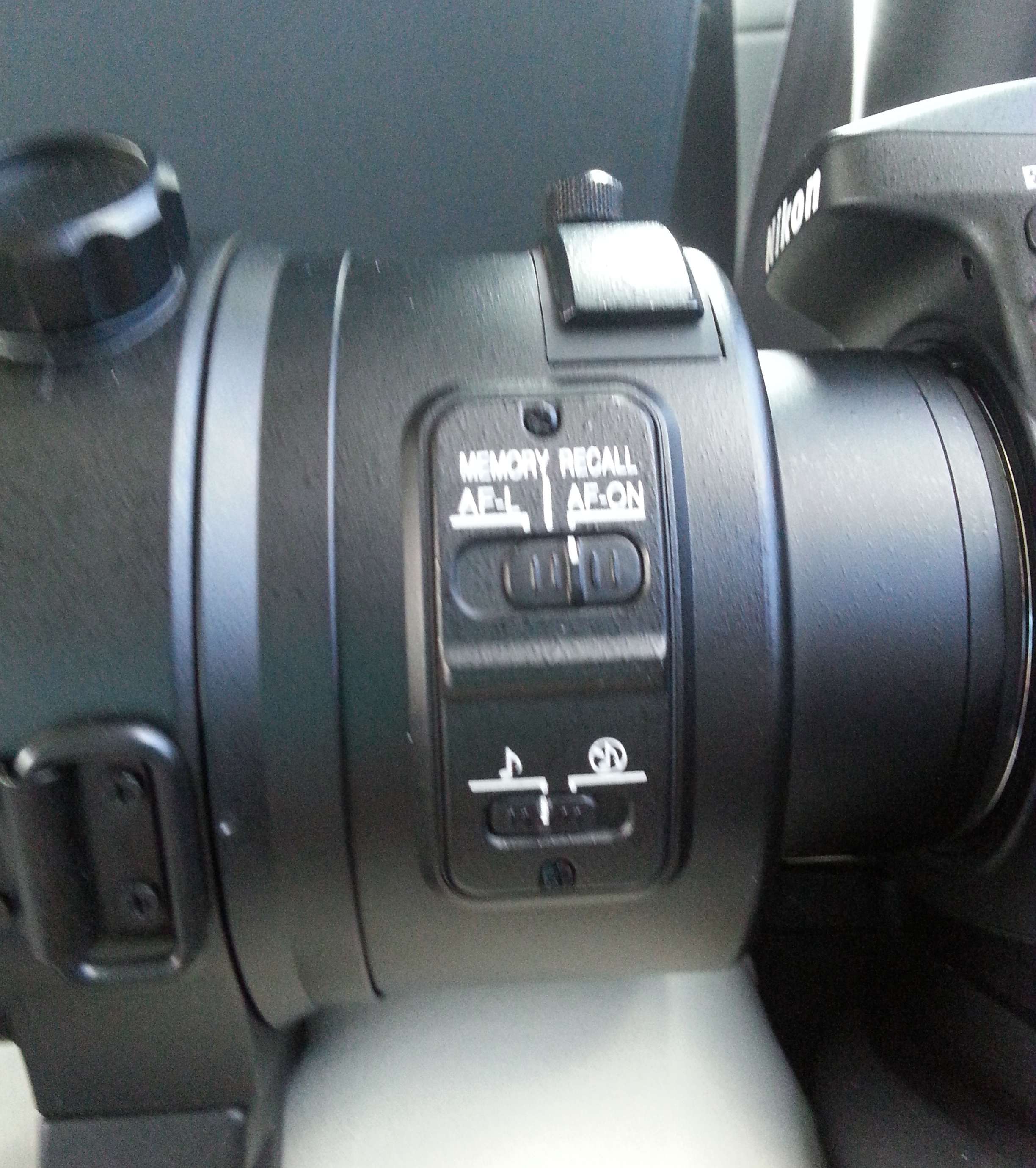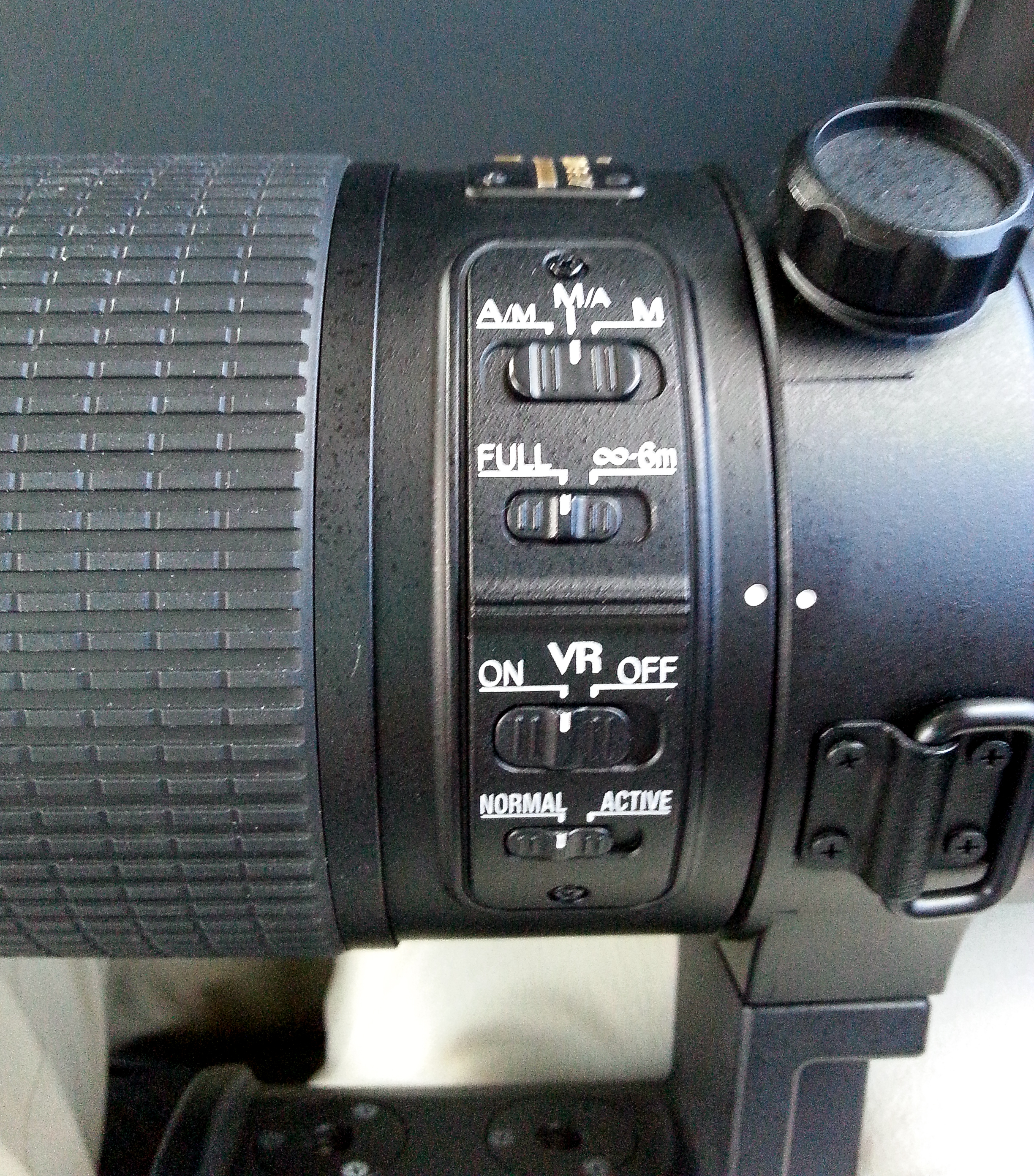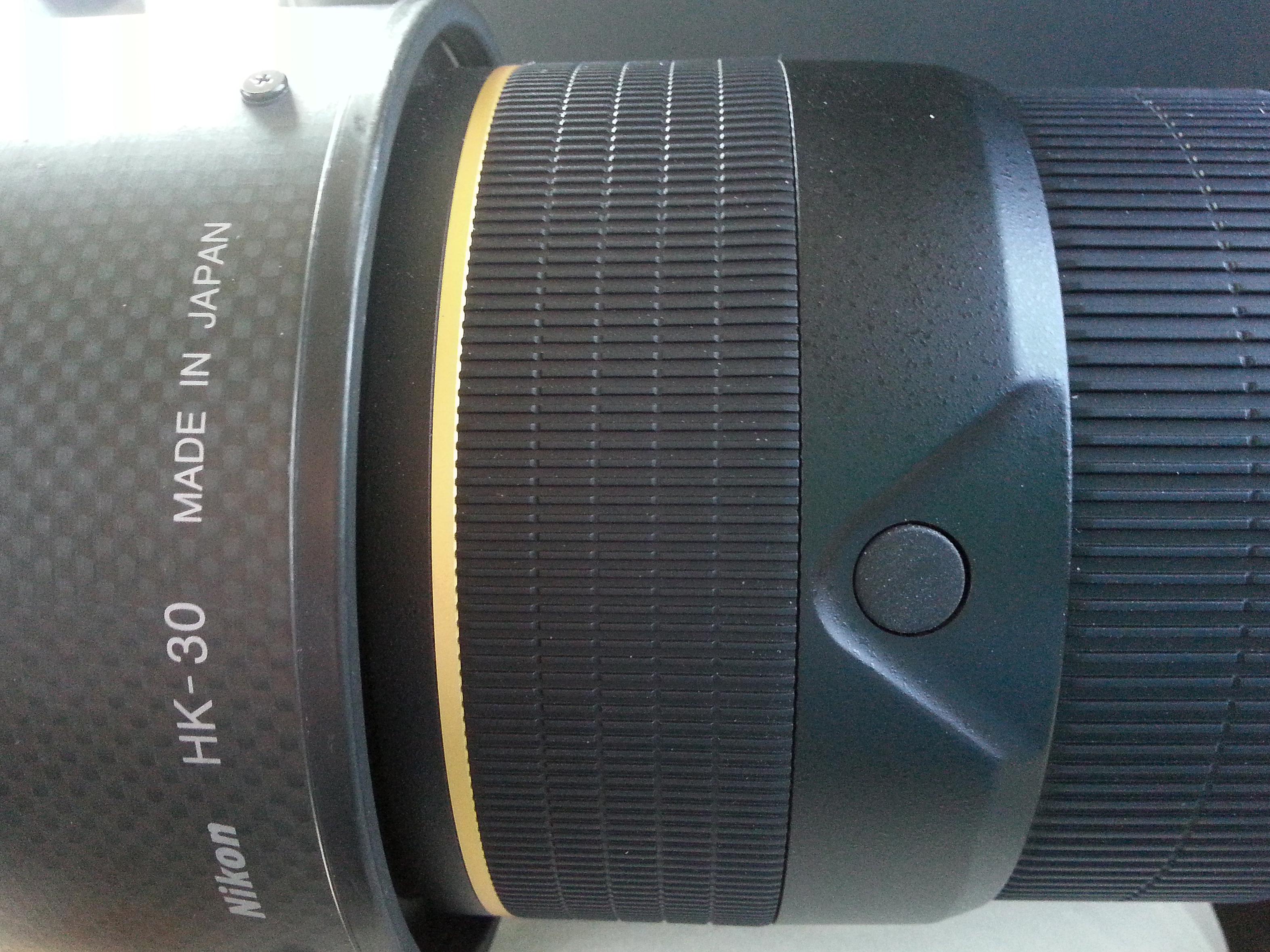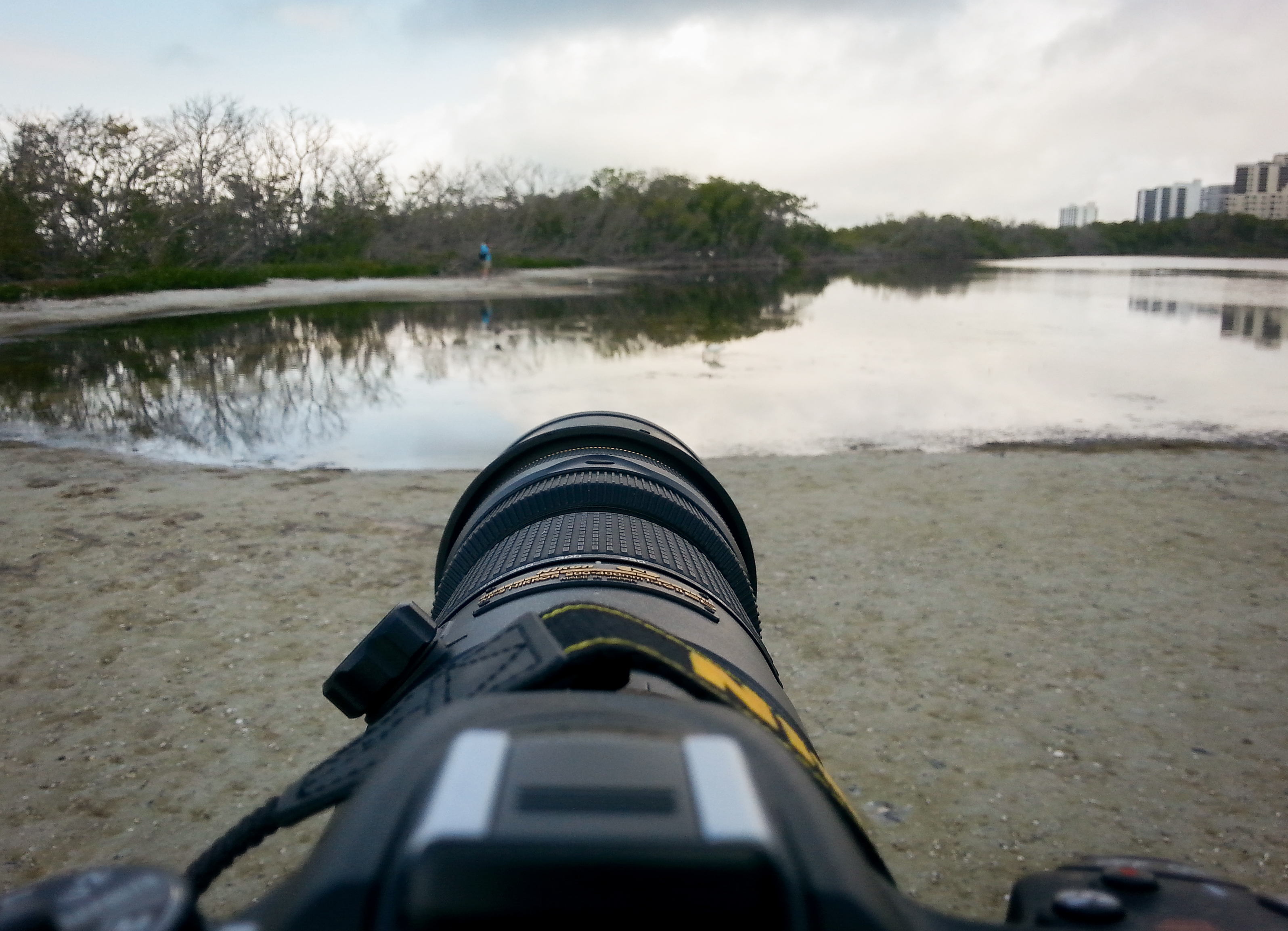Nikon 200-400 f/4 VR II Lens Review. I had the opportunity to use this wonderful lens for several days and decided to write a review on it like the review that I wrote on the 20mm f/1.8 (new last fall) that was so successful. This lens is very impressive. Although it is mostly known as a sports and wildlife lens, I found that it was very versatile for bird photography down here in FL where you can get close to the birds. It is a versatile lens in general and one that I would definately recommend. Although telephoto prime lenses can be wonderful and excellent in quality, they don’t have quite the same versatility that a zoom lens provides when working in close proximity to wildlife and birds, and this lens delivers quality and versatility.
Like the previous review, this one won’t have many specifications about the lens or charts and tests (which are very helpful in determining the quality of lenses) but rather practical everyday experience of using it.
Starting with physical characteristics, this lens is big, long, and very solid. It is a big jump up in size from the 80-400 f/4.5-5.6, more of the size of some of the big primes, but not as wide as some of them. It is heavy. Too heavy to shoot with handheld for long lengths of time, unless you are very strong. It weighs in at about 7.4 lbs without the camera or monopod. I found that I could hold it for a little while at a fast shutter speed, but most of the time having it mounted on a monopod worked the best for me. I don’t like to use a tripod unless I have to because it slows me down so the monopod was just right.
The 200-400 f/4 VR II is a pro lens and it performed like one. The autofocus is quick and the image quality is excellent. The bokeh is beautiful also (maybe not quite as good as the 70-200 f/2.8, but still looks creamy and smooth in images.) The lens comes with a large screw on hood which you’ll want to keep on whenever it’s in use and a rear drop-in filter. It has several switches which I’ll explain below.
Here are some example images from the lens that I took. A DX (cropped sensor) camera body was used. The images in this review taken with the lens were RAW files processed in Lightroom (I think one in Photoshop) and then downsized and converted to jpegs. You may have seen some of them before in other posts. :)

1/800, f/5.6, ISO 1600, 400mm

1/800, f/5.6, ISO 1600, 350mm

This heron looks to me like it was photoshopped onto the background, but it was really there! 1/1250, f/5.6, ISO 1250, 400mm

1/1250, f/5.6, ISO 1250, 350mm

1/3200, f/5.6, ISO 640, 400mm

1/6400, f/5.6, ISO 1600, 400mm

1/4000, f/8, ISO 800, 400mm

1/5000, f/8, ISO 800, 310mm

1/60, f/25, ISO 100, 400mm
This image was taken in midday bright sunlight at f/25 and even though it was a panning shot, it still looks like there is some diffraction that makes the whole image slightly soft because of the small aperture. But in reality, f/25 is rarely used on a 400mm lens and diffraction is normal at very small f-stops.
Please excuse the very poor quality of the photos below. (They were taken with a cell phone in a moving vehicle!) :)

The first feature we’ll look at on the lens controls is the memory recall feature. This is probably not something that you’ll take the time to use every day but it could be very helpful in certain situations. To use this feature, focus on your desired target (whatever distance you want the lens to “remember”) and press the small memory set button on the right side of the lens closer to the camera. That distance will be stored in memory even if you turn the camera off. Then when you want the lens to snap back into focus to the specific distance setting you just set, press one of the focus buttons (small buttons, which have several uses, at the front of the lens up by the hood.) Before using this feature, however, set the control pictured above to the middle position under the small vertical bar. This sets the focus buttons on the front of the lens to recall the memorized focus distance, since they can also do other things. When the focus is recalled, you can choose to have it make a beep or be silent by the switch below the other control. These settings might be used for example if your shooting sports and you want to take pictures of various players and then be able to quickly focus on a set spot again where a particular action takes place. Just remember that the focus may not always be accurate enough for a sharp image because things can move out of the plane of focus very easily if your shooting at a wide aperture.
The other ways you can use the focus buttons is the AF-ON setting to the right which activates autofocus when one is pressed and, to the left, AF-L which temporarily locks focus when one of the focus buttons is pressed. The lock was the original use of the focus button.

Here is where the autofocus and VR setting on the lens are. Most newer lenses have both the M/A (full autofocus with manual override which means that you can still turn the focus ring to fine tune the focus) and fully manual (M), but this lens also has A/M mode which helps to protect against accidentally bumping the focus ring and changing it by delaying the switch to manual focus.

Here is a close up of the focus buttons used to activate the memory recall. They are also meant to be used independently to pause or activate (depending on your setting) the autofocus while being depressed .

Shooting with the lens securely mounted on a monopod at Little Estero Lagoon.

1/2500, f/5.6, ISO 800, 310mm

Depth of field at f/8 and 400mm. 1/5000, f/8, ISO 800, 400mm
I hope that this article was helpful to you in some way! Feel free to ask any questions as well in the comment section below or share your experiences about using this lens.

Great review and fantastic photos … they make me really, really want this lens…
Your photos are truly stunning! You capture nature in a truly unique way. Very artistic eye. Great lens review too!